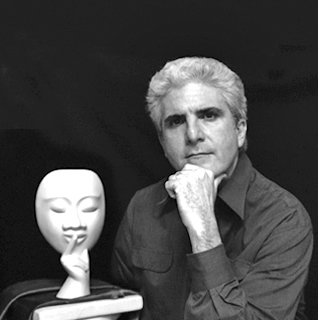Felice Pedretti: Biography |
||
|
Felice Pedretti was born in South Africa to Italian parents. In 1977, after having attended an English school, he came to Italy where he had the privilege of meeting artist and restorer Luigi Ferrero, who aroused in him a deep interest in ancient art. «What I’m teaching you are ancient gestures and the result of centuries of experience and love for art», are his Teacher’s words that have remained impressed in his mind. A crucial turning point was his meeting with Pietro Annigoni, Gregorio Sciltian and Giorgio de Chirico, famous artists with whom he had the good fortune to study. In that period, he learned the egg tempera and velatura techniques. After a long apprenticeship, his inborn passion already manifested itself in his first works, brought to the public eye in various art exhibits. Initially, his love of art inspired him to create still life and reproductions of antique paintings upon request. Many of Pedretti’s works refer to his home town. Myth and legend of the Cape of Good Hope are key features, for example, in Adamastor, and the Protea, the national flower of South Africa, appears in the representation of Mal d’Africa (Nostalgia for Africa). Furthermore, the image of Table Mountain is the background in many of his paintings. These elements symbolize nostalgia for his birthplace.
|
|
Review HORTUS CONCLUSUS is Latin for "enclosed garden." For Pedretti, the enclosure has a metaphorical meaning that symbolizes our daily life, such as our home or our workplace. The wonderful thing is that whenever you want to "escape", you need only cast your gaze over the wall to feel pleasantly carried away up towards an open sky and to freedom… In November 2007, Pedretti’s works were on display at Palazzo Valentini in Rome at an exhibition entitled "Between Dream and Reality", garnering acclaim both from the public as well as the critics. This success inspired a documentary of the same name which was written and directed by Stefano Maria Gallo, a well known producer at RAI television, and was subsequently entered in a competition at the "BrixenArt Filmfestival of Bressanone". Other important exhibitions included: Rome - Galleria Vittoria L’orizzonte del silenzio (2009); Rome – Palazzo Valentini Tra sogno e realtà (2007); and, Spoleto – Festival dei due mondi (2003). Love, Beauty and Silence are always present in Felice Pedretti's art and life, and he uses symbolism to emphasize these themes. In fact, symbolism abounds most particularly in his "metaphysical" paintings depicting love, beauty and myth. He uses symbolism in virtually all of his works, and, applying our own subjective interpretation, symbols acquire deeper meaning for us. The feather, the protea or the labyrinth and the Parthenon, and even the moon and the sun, for example, represent our traditions and our history, our way of thinking, and they are all prominent in his paintings. Everything in the pictorial environment of the artist has always tended towards the ideal of perfection and the myth of beauty. The presence of myth, dreams and a kind of romance, as well as imagination, combines with his poetic nature. His works often depict thought, melancholy, passion, love, sufferance, joyfulness and silence. «Silence and "closure" in Felice Pedretti evidently refer to each other. What is meant by "closure"? Quite simply, to separate the spatial framework that has distanced itself from the reality-noise», wrote Robertomaria Siena, Italian Art critic and historian, Professor at the Academy of Fine Arts in Rome. Felice Pedretti has been influenced by leading surrealists, such as Dalí, Magritte, Böcklin, and especially De Chirico, but seeks to incorporate into his work an intellectual and refined Surrealism. «Painting cannot be separated from history, from vocation and from memory. Even here, that which is necessary and consequential appeals to classicism». Felice Pedretti firmly believes that technique is style and that an artist must have knowledge of artistic profession as well as an intimate familiarity with the works of masters of the past so as to ensure continuity, but with a "modern language", as he demonstrated in the exhibition Tra sogno e realtà in Rome in May 2009. Siena also addressed the subject of meta-physics, so much a part of Pedretti’s work and beliefs. Metaphysics is an expression of spirit that gives form to spaces and objects which occur beyond the limits of the physical, expressed in a lyrical and enigmatic way. It can surprise and engage, because subconsciously it is part of creativity and knowledge. This transpires as if by magic in a dream-like world that exists between the day that comes to an end and the night that is about to begin. This is the magical world that Felice Pedretti creates and the dream to which he aspires.... «Art is a wonderful way to express dreams and sensations to share with everyone...» “Felice Pedretti” |
||
